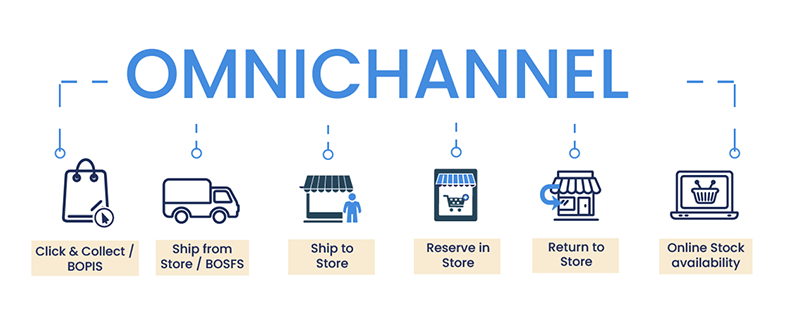RFID bridges the gap between online and in-store, powering a seamless omnichannel experience.
In today’s retail world, customers expect a seamless experience—whether they’re shopping online, picking up in store, or making returns from home. This is the essence of omnichannel retail, and it’s quickly becoming the new standard.
However, delivering a consistent experience across all touchpoints requires accurate, real-time inventory visibility—something that many retailers struggle with. That’s where RFID (Radio Frequency Identification) comes in.
RFID is transforming how retailers manage inventory, fulfill orders, and deliver on the promise of true omnichannel service.
1. Real-Time Inventory Accuracy Across Channels
Traditional inventory systems rely on manual updates or barcode scans, which can quickly become outdated. RFID changes that. Each item is tagged with an RFID chip that can be scanned wirelessly—instantly updating inventory across all platforms.
Why it matters:
When your online store says a product is in stock at a specific location, customers expect it to be there. RFID ensures that promise is accurate.

2. Faster & Smarter Fulfillment
Whether it’s buy online, pick up in store (BOPIS) or ship from store, RFID enables retailers to locate items faster and fulfill orders more efficiently. Employees can find products in seconds using RFID handheld devices—saving time and reducing order errors.
Example:
An associate can scan an entire shelf in seconds without touching a single item, ensuring accurate order picking and faster customer service.
3. Enabling Store-as-a-Warehouse Models
RFID empowers stores to act as mini-distribution centers. By having clear visibility into what’s available at each location, retailers can route online orders to the most efficient fulfillment point—reducing shipping costs and delivery times.
The result:
Better use of store inventory, fewer stockouts, and happier customers.


4. Smoother Returns and Exchanges
Returns are a critical part of omnichannel retail. RFID simplifies this process by instantly identifying returned items, validating authenticity, and updating stock levels automatically—whether the return comes from online or in-store.
This reduces fraud, saves staff time, and speeds up restocking for resale.
5. Improved Customer Experience
Ultimately, omnichannel success is all about delivering what customers want, when and where they want it. RFID ensures inventory data is accurate and actionable—so shoppers can trust stock availability, get faster service, and enjoy a frictionless shopping journey.


